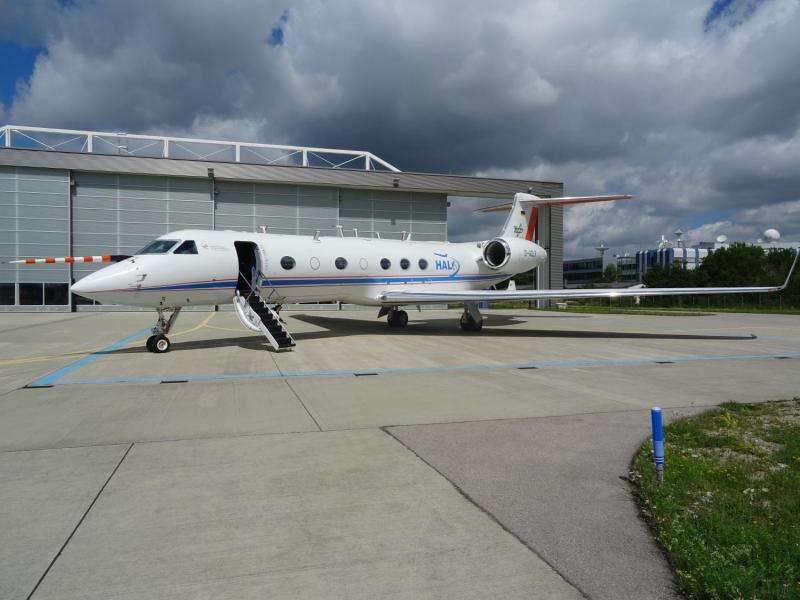Air quality measurements in the sky over Europe

It looks like a bucket list for city trips, but it's the current route of the HALO research aircraft. Until the end of July, atmosphere researchers from all over Germany will study air pollution above European conurbations. They want to better understand and predict the impacts of pollution on the Earth's atmosphere. Two instruments on board HALO have been developed by researchers of Karlsruhe Institute of Technology (KIT) to measure concentrations of ozone and volatile hydrocarbons.
The current measurement campaign coordinated by Bremen University focuses on the chemical characterization of pollutions and their impact on air quality in the mostly rural regions located in the plumes of big cities. For this purpose, the HALO research aircraft of the German Aerospace Center (DLR) is used. The team of Andreas Zahn and Marco Neumaier from KIT's Institute for Meteorology and Climate Research (IMK) has developed two instruments for use on aircraft.
One measures the reactive trace gas ozone with extremely high accuracy at a speed of 10 measurements per second. "On sunny days in particular, ground-level ozone is formed from nitrogen oxides originating from car exhaust gas, for instance. This ozone decisively contributes to the formation of summer smog. Interestingly, the highest ozone concentrations are not encountered directly in the conurbations, but in the neighboring rural areas," Andreas Zahn of IMK says. Volatile organic compounds, VOCs for short, play a key role.
"These substances, including acetone, methanol or benzene, are either released into the atmosphere by plants or of anthropogenic origin, an example being exhaust gas from traffic," Marco Neumaier explains. The second KIT instrument, a highly complex proton transfer reaction mass spectrometer, can measure smallest trace concentrations of many of these VOCs in real time. "The instrument can detect a single acetone molecule in 100 billion air molecules," Neumaier says.
The current measurement flights, altogether 52 hours of flight until late July, make up the first phase of the international measurement campaign, "Effect of Megacities on the Transport and Transformation of Pollutants on the Regional and Global Scales" (EMeRGe). On board HALO, more than 15 highly sensitive instruments have been installed to measure trace gases and aerosol particles. Seven German research centers and universities participate in the campaign, which is coordinated by the Institute of Environmental Physics of Bremen University. The acronym HALO stands for "High Altitude and Long Range Research Aircraft."
In parallel, measurements with other aircraft and ground-based measurement systems are carried out all over Europe. The second phase of the measurement campaign will take place in Taiwan in spring 2018 and focus on Asia.
Provided by Karlsruhe Institute of Technology




















